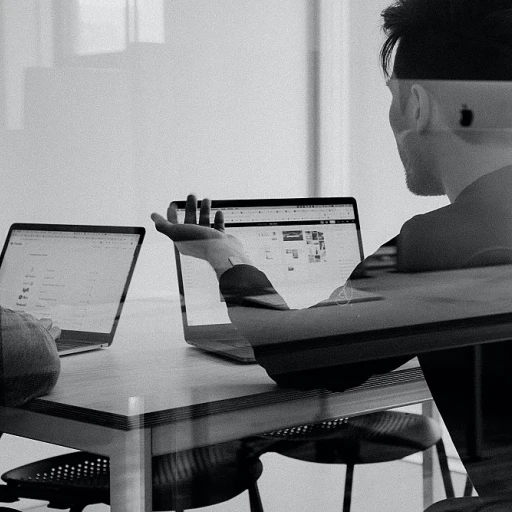
Understanding the Limitations of PeopleSoft
Limitations of Traditional HR Management Systems
PeopleSoft, once a staple in human resources management, has become less effective in today’s rapidly evolving technological landscape. This is largely because traditional systems like PeopleSoft were developed during a time when the business environment was drastically different. While they provided a foundation for managing HR processes, their limitations in adaptability and functionality have become more pronounced.
One of the main limitations is the inability to process large volumes of data efficiently. As companies grow, especially those transitioning to cloud infrastructure, the need for a more robust system that can handle vast amounts of data is essential. PeopleSoft's older architecture struggles to keep up with these demands, resulting in performance issues and slower decision-making processes.
The integration and support of newer technologies pose another challenge. For example, PeopleSoft customers often encounter difficulties when trying to integrate emerging technologies like artificial intelligence and cloud-based services. The lack of seamless compatibility within PeopleSoft's framework means companies are often unable to leverage the full potential of AI-driven insights and cloud-based solutions.
Cost and Complexity of Maintenance
Running PeopleSoft systems requires substantial investment in terms of time and money. The maintenance of these legacy systems often necessitates dedicated resources and expert technical support, increasing the overall operational costs. For this reason, many businesses find themselves weighed down by the balance between maintaining an aging system and the promise of modern solutions.
This is further compounded by the complexity inherent in upgrading PeopleSoft systems. Each upgrade can be a lengthy and expensive process, detracting from the flexibility that today's fast-paced business environment requires. For companies keen on staying ahead, the rigidity of traditional ERP systems like PeopleSoft becomes a significant hurdle.
As more organizations explore alternatives, the role of AI and its integration with cloud-based services such as Oracle Cloud Infrastructure becomes increasingly appealing. Many businesses recognize that embracing AI and migrating away from traditional ERP systems can improve scalability and adaptability, essential elements in meeting modern business needs. Exploring the future of HRIS careers in the age of AI provides insights into these transitions and underscores the necessity of moving towards more innovative solutions.
The Rise of AI in Human Resources
The Emergence of AI-Powered HR Solutions
As organizations are exploring new technologies, the adoption of AI in human resources is rapidly gaining traction. This surge is transforming traditional models and making room for innovative AI-powered systems that are significantly enhancing efficiency. Moving away from traditional systems like PeopleSoft, which have been the backbone for many HR departments, presents new opportunities for growth and improvement.
Driven by significant improvements in cloud infrastructure and data management, AI offers a way to address workforce challenges in a dynamic business environment. Oracle's cloud-based Business Suite, for example, provides a comprehensive approach, integrating seamlessly with existing platforms to streamline HR processes. Companies are now able to harness the power of cloud HCM and cloud ERP technologies to gain insights previously unavailable with pre-existing software solutions.
Customers previously reliant on Oracle PeopleSoft are finding that the transition to AI entails the potential for enhanced business performance and agility. These solutions provide a sophisticated data analysis, which substantially sustains decision-making processes while improving overall workforce management.
Organizations tapping into technologies such as Workday and OCI are embracing AI and migrating from traditional ERP systems. The quest for a more agile and insightful system is increasingly being facilitated by cloud migration strategies. HCM Cloud, paired with advanced Oracle databases, is setting a new standard for futureproofing human resources departments.
Witnessing the growing trend of AI adoption illustrates why moving away from systems like PeopleSoft is a viable step forward. As AI continues to advance, its role in shaping the future of HR becomes not just a possibility, but an inevitable reality. Businesses are now in a prime position to leverage AI for not just improved metrics, but enriched employee experiences that drive organizational success.
Benefits of Moving Away from PeopleSoft
Unlocking New Potentials with Advanced AI Solutions
Transitioning from PeopleSoft to AI-driven human resource solutions is not just about upgrading technology; it’s about embracing a paradigm shift that aligns with the dynamic nature of modern business environments. One of the core advantages of moving away from PeopleSoft Oracle is how AI integrates seamlessly with cloud-based infrastructures like Oracle Cloud, Workday, and OCI. These platforms offer greater flexibility, support, and scalability, empowering organizations to harness data-driven insights for strategic decision-making. The allure of cloud-oriented AI systems lies in their ability to adapt to the rapidly evolving landscape. Oracle products, renowned for their robust cloud infrastructure, deliver enhanced capabilities that break away from the limitations seen in traditional ERP systems. By moving to cloud ERP and HCM Cloud solutions, organizations can streamline processes, reduce operational costs, and pave the way for innovation. A blog on exploring innovations in AI for human resources underscores this transformation through the use of AI. Moreover, transitioning opens doors to personalization and improved user experiences, which were challenging within the PeopleSoft framework. AI's ability to offer predictive analytics, automate routine tasks, and provide employee-centric solutions contributes to a more agile and responsive HR system. For industries such as higher education and businesses requiring intricate configurations, the shift to cloud HCM systems ensures data security, compliance, and operational excellence. Another significant benefit revolves around the support ecosystem. By moving to newer, AI-enabled solutions, customers benefit from better vendor support and integration capabilities, easing the burden on internal IT teams. Companies like Rimini Street offer support services that ensure smooth transitions away from PeopleSoft, further enhancing the appeal of adopting AI solutions. Ultimately, the business suite enriched with AI-driven functionality is crucial in helping organizations adapt to ever-changing workforce dynamics. As enterprises navigate the intricacies of this transition, the role of AI becomes instrumental in redefining how human resources are managed and optimized for the future.Challenges in Transitioning to AI Solutions
Overcoming the Hurdles of AI Migration in HR
Transitioning from legacy systems like PeopleSoft to AI-driven solutions in human resources is no small feat. Organizations often face several challenges during this transformation, but understanding and addressing these challenges can pave the way for a smoother transition. Firstly, the migration to AI-based systems requires a significant investment in terms of both time and money. Implementing new technology involves not just purchasing software but also integrating it with existing systems. This often means investing in a robust cloud infrastructure, like Oracle Cloud, to support the technological demands of AI-based HCM solutions. This can be particularly challenging for PeopleSoft customers considering a move to Oracle’s suite of cloud products. Another major hurdle is data migration. Transitioning from PeopleSoft to AI involves the movement of vast amounts of data, sometimes accumulated over decades. Companies need to ensure that this data is accurately migrated and remains accessible in the new system. This can involve complex processes, especially when dealing with sensitive employee information stored in older Oracle databases. Adapting to new workflows and processes is yet another challenge. Employees need to be trained to use the new systems efficiently. For many businesses, this means rethinking long-established processes and embracing new ways of working. HCM cloud solutions from providers like Workday or Oracle Cloud ERP require familiarity with different user interfaces and functionalities, demanding comprehensive training programs. Support is crucial during this transition. Many organizations seek assistance from experienced service providers like Rimini Street for ongoing support and guidance. This ensures continuous operation without interruptions, something crucial for maintaining business operations during the migration period. Finally, overcoming resistance to change is crucial. Employees can sometimes be hesitant about new AI technology replacing established systems. Effective change management strategies and clear communication can help alleviate these concerns by highlighting the long-term benefits of moving to a new system, such as improved efficiency, better data analytics, and enhanced decision-making capabilities. Addressing these challenges head-on with strategic planning and expert support can facilitate a smoother journey away from PeopleSoft to a more advanced, AI-powered HR system, positioning organizations to leverage future trends in AI-driven HR solutions.Case Studies: Successful Transitions
Effective Strategies Adopted by Businesses in Their Shift Toward AI-Driven HR Systems
The transition from traditional systems like PeopleSoft to modern AI platforms has proven to be both a challenge and an opportunity for numerous businesses across industries. Companies that have successfully embraced AI in their human resources (HR) departments often showcase a variety of strategies. These cases illustrate how embracing new technologies can ultimately enhance capabilities and streamline processes. One of the notable examples involves businesses that decided to transition from Oracle's PeopleSoft to more advanced, cloud-based AI solutions. The motivator for this significant change often revolves around scalability and robustness. By moving away from legacy systems, businesses can leverage offerings like Oracle Cloud and other cloud infrastructures to support more dynamic, responsive, and efficient HR operations. Several organizations found success by adopting a phased approach when migrating their databases. The transition to AI-driven solutions often begins with the gradual migration of certain HR modules to minimize disruption. This methodical shift helps ensure that data integrity is maintained throughout the process, diminishing risks associated with rapid change. Furthermore, an increasing number of organizations tailored the AI solutions to their specific business requirements— showcasing a key strategy in their transition. Customizable solutions allow businesses to address particular HR challenges, such as talent acquisition and performance management, by harnessing the predictive analytics capabilities of AI technologies. It's also important to note that support from external service providers, including firms like Rimini Street, can offer a bedrock of stability. These third-party support organizations help bridge the gap between implementing cutting-edge technologies and maintaining business continuity during transitions. Finally, the adoption of comprehensive training and change management solutions plays a pivotal role in successful transitions. Businesses that invest time in preparing their HR teams for the new AI-driven environment often report smoother adaptations. Providing thorough training ensures that the team is competent with the use of new systems, paving the way for maximized benefits from advanced technology solutions. In conclusion, successful transitions from PeopleSoft toward AI-enhanced systems exemplify the importance of strategic planning and execution. By gleaning insights from these case studies, businesses can pave their path to more efficient and effective HR operations.Future Trends in AI for Human Resources
Emerging Horizons in HR Tech
As businesses continue to move away from systems like PeopleSoft to embrace more advanced AI technologies, the human resources landscape is set for significant transformation. This shift is driven by powerful cloud infrastructure, such as Oracle Cloud, which provides the foundation for innovative solutions that will redefine HR practices.
In the future, AI-driven tools are expected to permeate every aspect of HR operations, from recruitment to performance management. The use of AI in HR is particularly promising in the realm of data analytics, as it will enable businesses to make better-informed decisions through actionable insights. AI’s ability to process vast amounts of data efficiently is a game-changer, allowing for more predictive and strategic workforce planning.
Cloud migration is another aspect influencing HR functionalities. With cloud HCM and cloud ERP systems, companies can expect more agility and scalability in their HR processes. These technologies will support organizations in aligning their HR strategies with business goals more effectively. As AI continues to evolve, HR professionals will need to adapt by acquiring new skills and staying informed about technological advancements.
Furthermore, support for AI integration, including offerings from Oracle products and systems like Workday, provides tailored solutions for businesses of all sizes. For PeopleSoft customers planning to move away from traditional systems, adopting Oracle’s cloud products and services can facilitate a smoother transition.
Looking ahead, AI's role in HR will not only enhance operational efficiency but also elevate the strategic value that HR can deliver to a business. By leveraging AI's capabilities, HR departments will transform from administrative functions to pivotal assets in driving organizational success.












